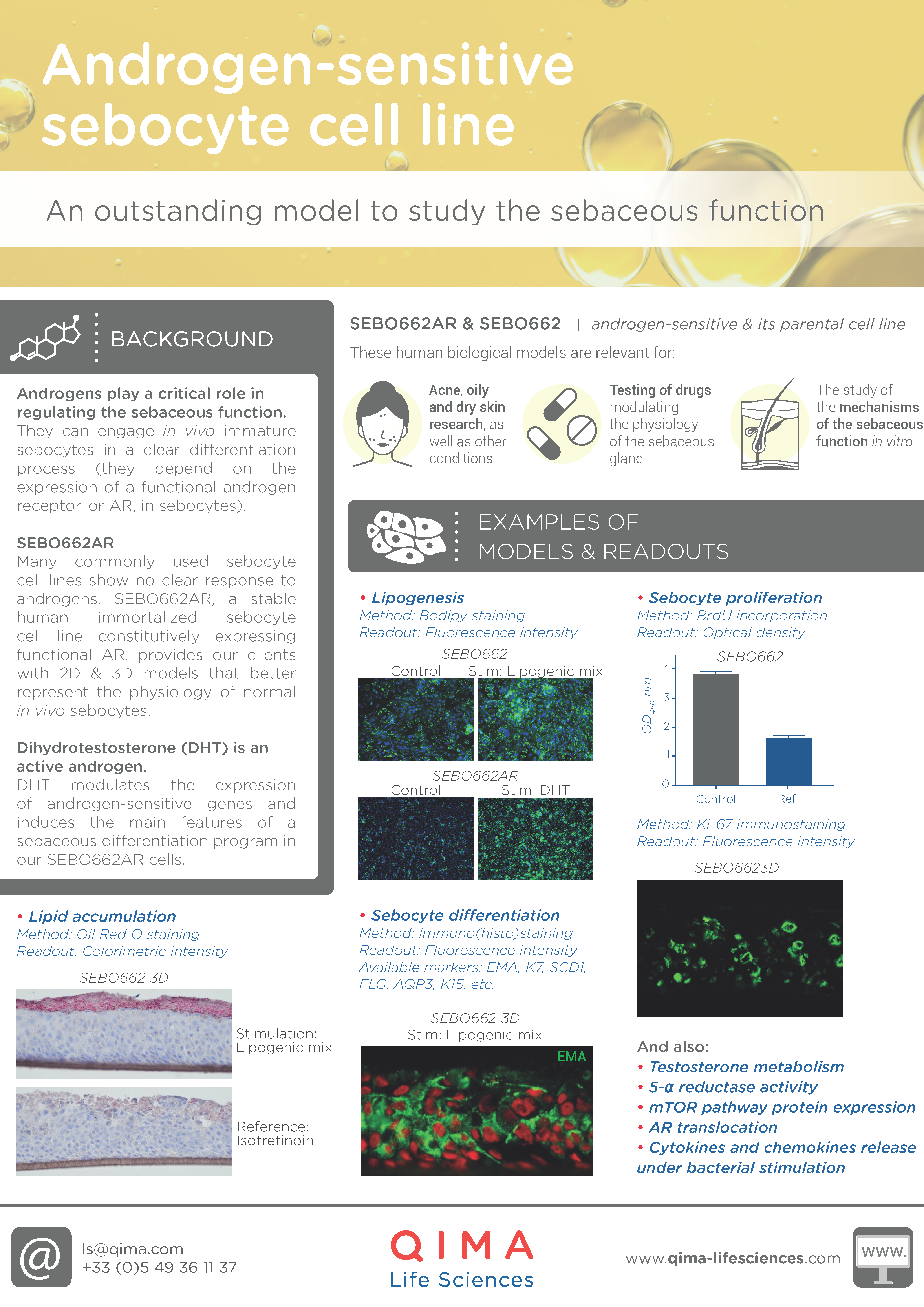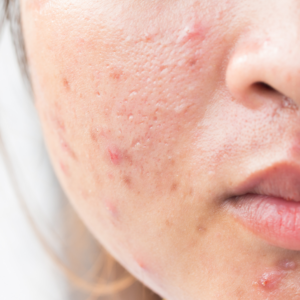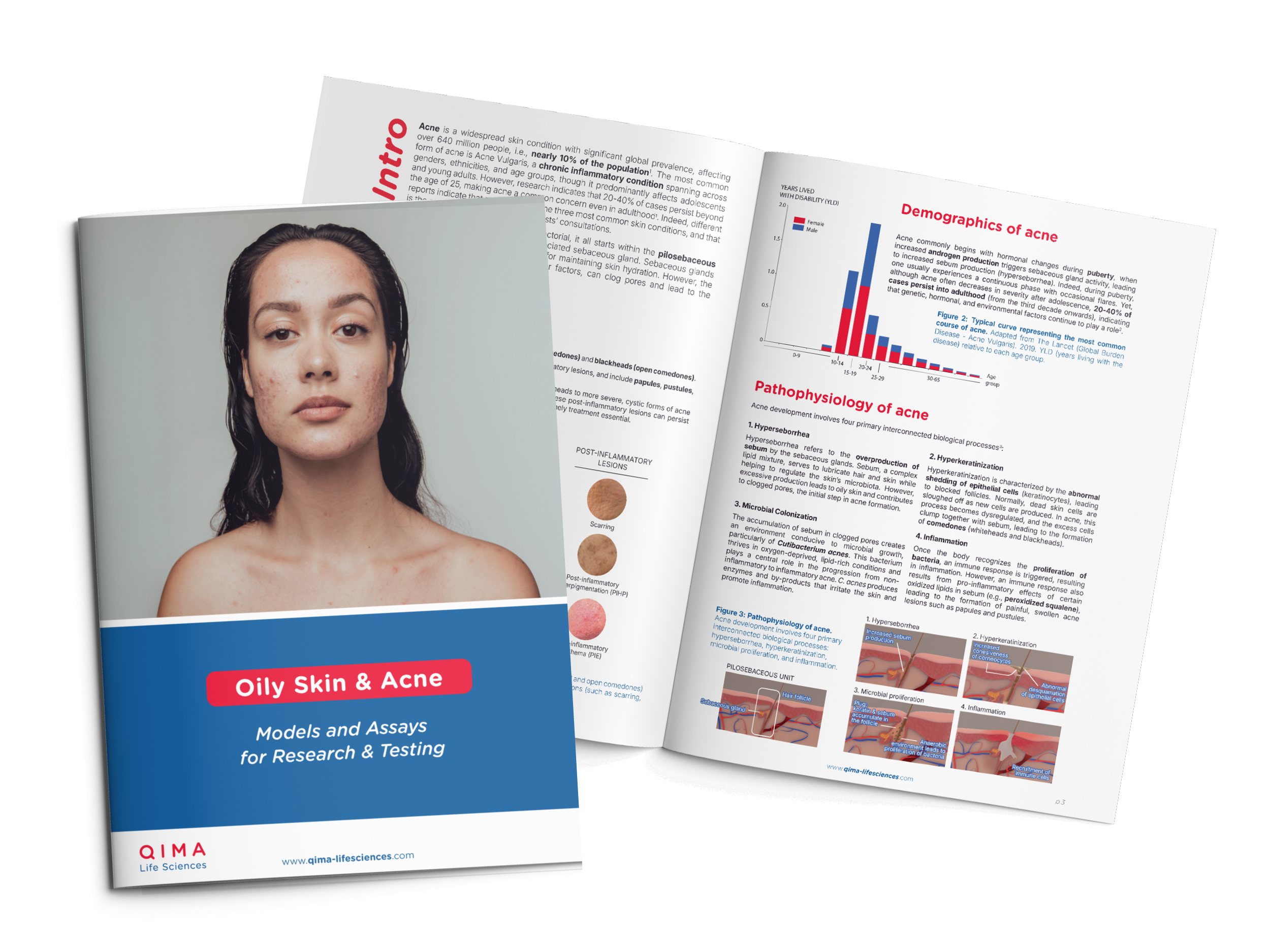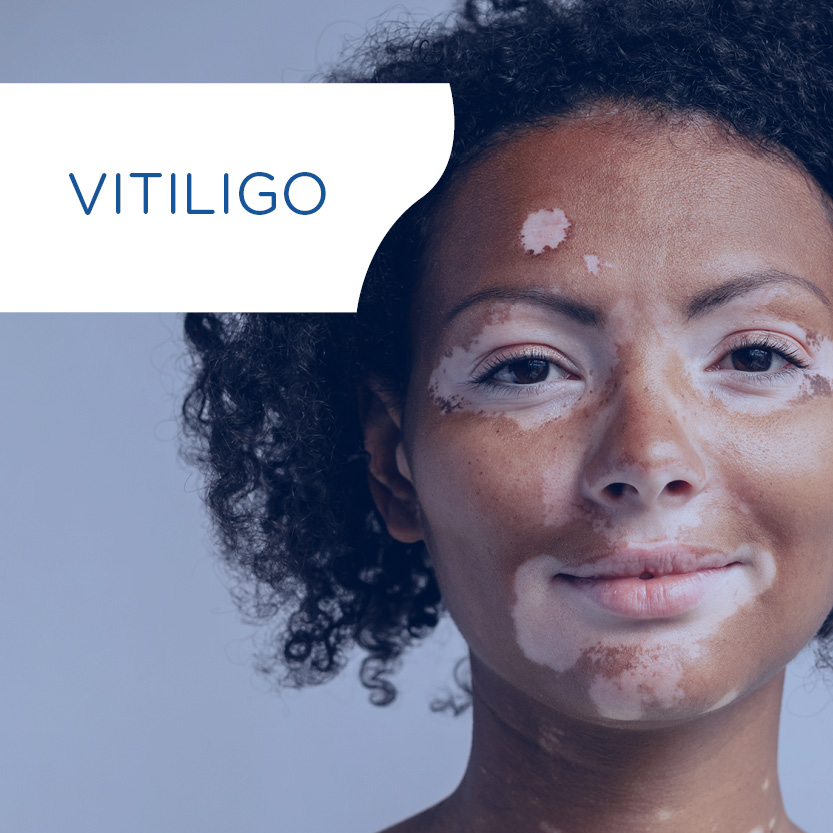Acne vulgaris, a multifactorial condition affecting a wide demographic, presents clinical and psychosocial challenges that require tailored therapeutic strategies. Its management often necessitates a combination of topical and systemic treatments, which, despite their efficacy, are frequently accompanied by skin-related side effects like dryness, irritation, and barrier dysfunction. These adverse effects can lead to patient dissatisfaction and poor adherence to prescribed regimens.
Dermocosmetics, designed to complement and support therapeutic approaches, are increasingly recognized for their role in mitigating these issues. By addressing skin barrier repair, soothing inflammation, and enhancing hydration, these products not only alleviate the discomfort associated with acne treatments but also improve patient compliance.
1. Treatments
Acne vulgaris management requires a personalized and long-term approach, with treatments adapted to the type and severity of acne as well as individual patient characteristics, such as age, lifestyle, and pregnancy.
Pharmacological therapies are the cornerstone of acne management and can be divided into topical and systemic treatments, each addressing specific pathogenic mechanisms.
1.1 Topical treatments
Topical therapies are the most common first-line treatments for mild to moderate acne and are directly applied to the affected skin. These include:
Topical retinoids
Indications: Effective for both comedonal (retentional) and inflammatory acne.
Mechanism of action: Retinoids, derivatives of vitamin A, act on the cellular level by binding to retinoic acid receptors (RARs) and retinoid X receptors (RXRs), which regulate gene transcription. This leads to:
- Keratolytic effects, reducing keratinocyte proliferation and adhesion.
- Anti-inflammatory effects by reducing free fatty acids and inhibiting inflammatory cytokines like IL-6 and IFN-γ.
Common molecules:
- Tretinoin
- Adapalene
- Isotretinoin
- Trifarotene
Side effects: Common effects include skin dryness, redness, irritation, and, in darker skin tones, temporary hyperpigmentation or hypopigmentation. Gradual introduction of retinoids (e.g., starting every third evening) can minimize these effects.
Benzoyl peroxide
Indications: Primarily for inflammatory acne in mild to moderate cases.
Mechanism of action: Benzoyl peroxide has a potent antibacterial effect, reducing C. acnes populations by up to 98% after two weeks of application. It also decreases free fatty acids, which reduces inflammation.
Usage: Often combined with retinoids for synergistic effects.
Side effects: Irritation, dryness, and bleaching of fabrics. Patients should avoid direct sunlight to minimize photosensitization.
Topical antibiotics
Indications: Effective against inflammatory lesions (papules and pustules).
Common agents:
- Erythromycin and clindamycin.
- Azelaic acid, which also inhibits keratinocyte proliferation.
Side effects: Skin dryness and irritation, as well as potential antibiotic resistance with prolonged use. Combining with benzoyl peroxide reduces resistance risk.
Interested in seboregulation?
Watch our video

1.2 Systemic treatments
Systemic treatments are indicated for moderate to severe acne or cases resistant to topical therapies. These include:
Oral antibiotics
Indications: Used for inflammatory acne, typically combined with topical therapies to prevent resistance.
Common Classes:
- Tetracyclines (doxycycline, lymecycline).
- Macrolides (erythromycin, clindamycin).
Side Effects: Gastrointestinal issues, photosensitivity, and antibiotic resistance. Treatment duration should not exceed three months.
Oral isotretinoin
Indications: Reserved for severe acne (e.g., nodulocystic or scarring acne) unresponsive to conventional therapies.
Mechanism of action: Targets all major acne mechanisms by reducing sebaceous gland size and secretion, preventing follicular hyperkeratinization, and exerting anti-inflammatory effects.
Precautions: Highly teratogenic, requiring strict contraceptive measures for women of childbearing age. Side effects include dryness of the skin and mucous membranes, musculoskeletal pain, and potential psychiatric effects.
Hormonal therapies
Indications: Beneficial for women with hormonally influenced acne.
Common agents:
- Combined oral contraceptives (e.g., ethinylestradiol with antiandrogenic progestins like drospirenone).
- Antiandrogens (e.g., cyproterone acetate, though its use is now restricted).
Mechanism of action: These therapies reduce circulating androgens and sebaceous gland activity.
Side effects: Risks include mood changes, weight fluctuations, and a rare but serious risk of thromboembolism.
Zinc supplements
Indications: Mild to moderate inflammatory acne.
Mechanism of action: Zinc exhibits anti-inflammatory, antibacterial, and antiandrogenic effects. It is safe for pediatric and pregnant populations and does not cause resistance.
Side effects: Gastrointestinal discomfort, minimized by taking zinc with water and avoiding certain foods like whole grains that interfere with absorption.
1.3 Procedures
Innovative procedural approaches for acne treatment provide targeted solutions for resistant cases, effectively reducing inflammation and sebum production. While highly effective, these techniques can involve side effects such as erythema and irritation, highlighting the importance of complementing them with a tailored cosmetic regimen to support skin recovery and enhance overall outcomes.
Table : Example of new procedures according to Cruz et al., 2023.
| Procedure | Mechanism of Action (MOA) | Side Effects |
| 1726 nm Laser Devices (Aviclear™ and Accure Laser System) | Selective photothermolysis of sebaceous glands, leading to suppression of sebum production | Local erythema, irritation, xerosis (dry skin), and edema |
| Gold Nanoparticle-Enhanced Diode Laser and Photothermal Therapy | Selective photothermolysis of sebaceous glands, leading to suppression of sebum production | Local erythema, irritation, xerosis, and edema |
| Negatively Charged Air Ions (Dermio Care®) | Reduction of reactive oxygen species (ROS) and activation of the innate immune system | None reported in limited studies |
| Combined Systemic and Procedural Treatments | ||
| – Minocycline and Intense Pulsed Light (IPL) | Antimicrobial activity against C. acnes, suppression of sebum production, reduced hyperkeratinization, and decreased production of pro-inflammatory cytokines | Side effects of minocycline plus local erythema, irritation, xerosis, and edema from IPL |
| – Isotretinoin and IPL/DPL (Delicate Pulsed Light) | Same as above, with isotretinoin adding sebaceous gland suppression and inflammation control | Side effects of isotretinoin plus local erythema, irritation, xerosis, and edema from light therapy |
1.4 Other approaches
The development of novel acne treatments is ongoing, with emerging approaches offering promising alternatives to traditional therapies. These include topical antimicrobial peptides and bacteriophages, which specifically target C. acnes with minimal risk of resistance, as well as topical surfactin-based therapies and topical nitric oxide derivatives, known for their anti-inflammatory and antimicrobial properties.
Innovative formulations like oleogels provide enhanced delivery of active ingredients, while systemic options such as oral phosphodiesterase inhibitors and oral probiotics aim to modulate inflammatory pathways and restore microbial balance.
These advancements highlight the continuous evolution of acne management strategies, offering potential for more effective and personalized care.
2. Challenges in treating severe acne
Managing severe acne presents a range of challenges, particularly due to the side effects of common treatments. As discussed in the previous section, these side effects—ranging from dryness, irritation, and redness to increased photosensitivity and disrupted skin barrier function—can significantly impact a patient’s willingness and ability to adhere to prescribed therapies.
The psychological burden of visible skin reactions, along with the lifestyle adjustments required during treatment, further exacerbates these difficulties.
2.1. Impact on adherence
These challenges often lead to poor adherence to prescribed acne treatments. Patients may discontinue or use their medications inconsistently due to:
- Visible side effects: Redness, peeling, or other skin reactions can make patients feel self-conscious, discouraging continued use.
- Discomfort: Sensations such as stinging or tightness caused by certain treatments can reduce compliance.
- Delayed results: Acne treatments often require weeks or months to show visible improvement, which can demotivate patients.
- Complex regimens: Multi-step therapies, involving both topical and systemic treatments, can be overwhelming to follow consistently.
Poor adherence not only reduces the efficacy of treatment but can also lead to a cycle of frustration and worsening symptoms, ultimately undermining the patient’s confidence and commitment to their skincare regimen.
2.2. General strategies to improve adherence
Improving adherence to severe acne treatments requires addressing the challenges posed by common side effects. Key strategies include patient education, simplifying regimens, managing expectations, and providing supportive care like moisturizers and sunscreens. However, these approaches often need reinforcement to fully resolve adherence issues.
This is where dermocosmetics become essential. By mitigating the side effects of acne medications, dermocosmetics play a pivotal role in improving patient compliance. These products effectively complement medical treatments by soothing and repairing the skin barrier, reducing dryness and sensitivity, and enhancing overall tolerability. Their integration into acne management strategies is crucial for achieving better therapeutic outcomes.
3. The role of dermocosmetics in supporting adherence
Dermocosmetics play an indispensable role in acne management by bridging the gap between medical treatments and daily skincare routines. Specifically designed to address the side effects of acne therapies, these products provide targeted solutions that improve both patient comfort and treatment adherence:
- Mitigating side effects: Dermocosmetics soothe and repair the skin barrier, restoring its integrity compromised by treatments like retinoids and benzoyl peroxide. They also alleviate dryness and sensitivity through ingredients such as hyaluronic acid, ceramides, and niacinamide.
- Provide photoprotection: By incorporating sunscreens tailored for acne-prone skin, dermocosmetics prevent further irritation and UV damage. Advanced formulations, such as gel-based or tinted options, minimize pore-clogging and ensure optimal tolerability.
- Protecting against external aggressors: Dermocosmetics offer essential protection against environmental stressors, such as pollution, which is a known aggravating factor for acne. Pollution particles can penetrate the skin barrier, which triggers oxidative stress, inflammation, and increased sebum production. Advanced formulations with antioxidants like vitamin C, niacinamide, or ferulic acid neutralize free radicals, while anti-pollution complexes form a protective shield to prevent pollutant adhesion.
- Normalize skin microbiota: Dermocosmetics help normalize the skin microbiota, which can be disrupted by acne treatments such as antibiotics. Ingredients like probiotics and prebiotics support the growth of beneficial bacteria while reducing harmful strains, such as virulent Cutibacterium acnes.
- Complementing medical therapies: These products enhance the efficacy of pharmacological treatments by maintaining skin health, preventing secondary damage, and ensuring patients adhere to their regimens consistently.
- Providing a holistic approach: Dermocosmetics address multifaceted skin needs, including microbiome modulation, inflammation reduction, and sebum regulation. For example, cleansers with salicylic acid gently exfoliate clogged pores, while probiotics help maintain a balanced microbiome to prevent further breakouts.
- Enhancing patient experience: Beyond their functional benefits, dermocosmetics contribute to improving self-esteem by visibly reducing side effects and improving skin texture. Products like lightweight mattifying creams or tinted sunscreens reduce the psychosocial burden of acne, fostering confidence in daily life.
Dermocosmetics are not only adjuncts to acne therapies but also proactive solutions that help maintain long-term skin health. By addressing the root causes of acne and its visible manifestations, these products empower patients to take charge of their skincare, ultimately bridging the gap between therapeutic efficacy and patient adherence.
By enhancing tolerability, reducing visible side effects, and improving patient comfort, dermocosmetics ensure more effective therapeutic outcomes and foster adherence to prescribed regimens. This unique and dual function—supportive and preventive—highlights their indispensable role in comprehensive acne care.
4. Dermocosmetic care in acne management
Dermocosmetics are an essential component of a comprehensive acne care regimen, complementing medical treatments and addressing the skin’s specific needs. These products, classified into accompanying cosmetics and active cosmetics, support the skin’s health, alleviate side effects, and improve adherence to prescribed therapies.
4.1 Accompanying cosmetics
Accompanying cosmetics focus on cleansing, protecting, and hydrating the skin while addressing the side effects of acne treatments. These include products for cleansing, shaving, and moisturizing.
Cleansing
Proper cleansing removes sebum, dead skin cells, bacteria, and environmental debris, preparing the skin for medical treatments without disrupting its natural barrier.
- Recommended options:
- Soap-Free cleansing bars: Gentle on the skin, maintaining its pH and providing hydration.
- Gel and foam cleansers: Often appreciated by younger patients; may include active ingredients like salicylic acid or zinc.
- Cleansing milks: Non-comedogenic emulsions suitable for sensitive or dry skin, often paired with thermal water for additional soothing benefits.
Shaving
Shaving can aggravate acne, necessitating specific measures:
- Pre-cleaning the skin to remove excess sebum and soften the epidermis.
- Using shaving gels or creams instead of foams for better glide and reduced irritation.
- Electric razors or disposable blades are preferable to reduce bacterial contamination risks.
After-shave products should be alcohol-free and include hydrating and soothing agents.
Moisturizers
Hydration is crucial to counteract the dryness induced by treatments like retinoids or isotretinoin.
- Active ingredients:
- Hydrating agents: Glycerin, hyaluronic acid, urea.
- Soothing agents: Niacinamide, panthenol, thermal spring water.
- Tailored formulas:
- For oily skin: Lightweight, mattifying products to control excess sebum.
- For dry or sensitive skin: Barrier-repair creams enriched with ceramides and anti-inflammatory agents.
Sunscreens for acne-prone skin
Sun protection is essential, particularly during treatments that increase photosensitivity, such as retinoids.
- Key active ingredients:
- Mineral filters: Zinc oxide, titanium dioxide.
- Antioxidants: Vitamin E, ferulic acid.
- Advancements: Gel-based or tinted sunscreens tailored for acne-prone skin that avoid clogging pores while minimizing irritation.
4.2. Active cosmetics
Active cosmetics incorporate ingredients that actively target acne lesions, complementing medical therapies. These products often contain:
Alpha-Hydroxy Acids (AHAs)
Examples: Glycolic acid, lactic acid.
Functions:
-
- Keratolytic effect to unblock pores.
- Sebum-regulating and antibacterial properties (glycolic acid).
- Gentle exfoliation for sensitive skin (lactic acid).
Beta-Hydroxy Acids (BHAs)
Example: Salicylic acid.
Functions:
-
- Deep penetration into pores due to its affinity for lipids.
- Keratolytic, antiseptic, and soothing properties, ideal for acne-prone skin.
Vitamin A derivatives
Examples: Retinol, retinaldehyde.
Functions:
-
- Regulate keratinocyte proliferation.
- Promote cellular renewal and reduce clogged pores.
These products are potent but require careful use due to potential irritation, especially on sensitive skin.
4.3. Importance of professional guidance
While dermocosmetics enhance acne management, inappropriate product choices can aggravate the condition. For example:
- Comedogenic Ingredients: Can block pores and worsen acne.
- Harsh Cleansers: May disrupt the skin barrier and increase irritation.
Dermatologists and pharmacists play a crucial role in tailoring skincare routines to individual needs, ensuring compatibility with prescribed treatments.
Table : Example of active ingredients according to Kurokawa et al., 2023.
| Category | Ingredients |
| Keratolytic | Salicylic acid, Alpha-hydroxy acids, Retinol derivatives, Glycolic acid, Lipohydroxy acid, Linoleic acid, HEPES (4-(2-hydroxyethyl)-1-piperazineethanesulfonic acid) |
| Anti-inflammatory agents | Niacinamide, Zinc, Salix alba, Decanediol, Soy isoflavones, Lactobacillus-fermented, Bakuchiol, Panthenol, Thermal spring water |
| Sebum controlling agents | Niacinamide, Zinc, Bakuchiol, Epigallocatechin-3-gallate, Fullerene |
| Antimicrobial agents | Zinc, Mannose, Decanediol, Tea tree oil, Bakuchiol, Lactobacillus plantarum, Vitroscella filiformis (aqua posae filiformis) |
| Skin barrier protection | Procerad, Glycerine, Niacinamide, Ceramides, Panthenol, HEPES, Mannose, Vitroscella filiformis (aqua posae filiformis), Thermal spring water |
5. Future Perspectives
The intersection of dermatology and cosmetics continues to evolve, offering patient-centric solutions for acne management. Innovations such as personalized skincare, probiotic-based formulations, and enhanced barrier-supporting products are shaping the future of dermocosmetics.
It is essential to develop active cosmetic ingredients with multifunctional properties, addressing the complexity of acne pathophysiology. These properties include:
- Anti-inflammatory and soothing: To reduce redness irritation and sensitivity caused by pro-inflammatory mediators.
- Keratolytic: To promote gentle exfoliation, clear clogged pores, and prevent comedone formation.
- Pro-healing: To accelerate skin repair processes, particularly after acne lesions, and minimize scarring by promoting balanced extracellular matrix remodeling.
- Hydrating: To replenish moisture and support the skin barrier, particularly in patients using drying treatments such as retinoids or isotretinoin.
- Antioxidant: To limit the formation of pro-oxidative and pro-inflammatory molecules, such as peroxidized squalene, that exacerbate inflammatory acne.
- Sebum-regulating: To modulate sebaceous gland activity and reduce the overproduction of sebum that contributes to acne lesions.
- Microbiome regulation: To influence the balance of Cutibacterium acnes strains by reducing the virulent phylotype IA1, which is often linked to severe inflammatory acne. Probiotic or prebiotic strategies can help promote a healthy skin microbiome.
- pH balancing: To restore and maintain the skin’s natural acidic pH (4.5–5.5), which inhibits pathogenic bacterial proliferation and supports overall barrier function.
- Anti-pigmentation: To prevent or reduce post-inflammatory hyperpigmentation (PIH) by targeting melanogenesis pathways and oxidative stress that stimulate melanin production.
Download our flyer
Androgen-Sensitive
Sebocyte Cell Line

6. The role of validated models
The development of these multifunctional dermocosmetic actives requires robust preclinical and clinical validation models. Acne-specific models, like those provided by QIMA Life Sciences, are indispensable for:
- Assessing efficacy: Evaluating the ability of formulations to reduce sebum, inflammation, and microbial load.
- Testing safety: Ensuring formulations are non-comedogenic, non-irritating, and suitable for sensitive skin types.
- Studying microbiome interactions: Understanding how active ingredients influence the skin’s microbiome, particularly in modulating virulent C. acnes strains.
- Replicating real-world scenarios: Using models that mimic acne pathophysiology, including inflammatory cascades, sebaceous gland hyperactivity, and barrier disruption.
Written by:
Rachida Nachat-Kappes, PhD
Skin Biology Expert
Edited by:
Mara Carloni, PhD
Scientific Communications & Marketing Project Leader
Last update 01/04/2025
.
At QIMA Life Sciences, we are committed to advancing the efficacy and safety of acne care solutions through robust, validated models across both preclinical and clinical stages.
Our expertise enables the development of cutting-edge methodologies to address the intricacies of acne management, driving impactful results for our partners.
Discover how our comprehensive models and latest innovations can transform your acne research and product development.
.







